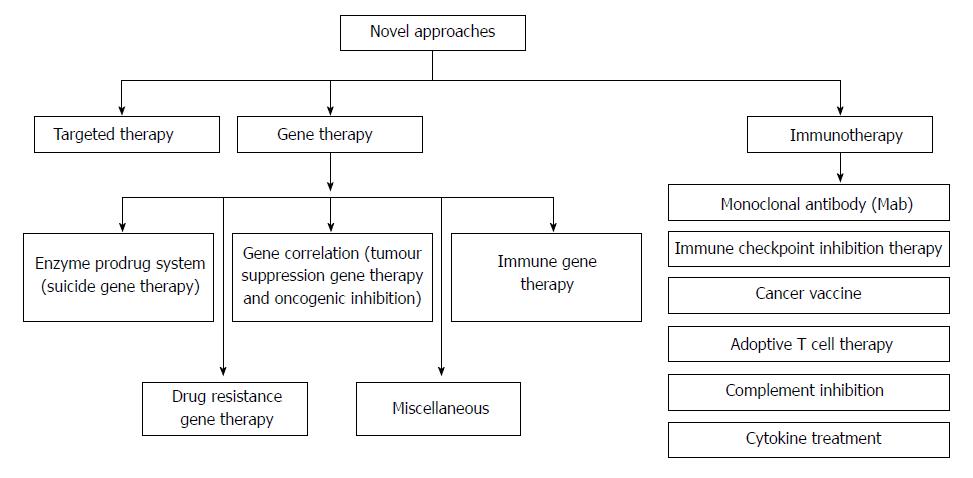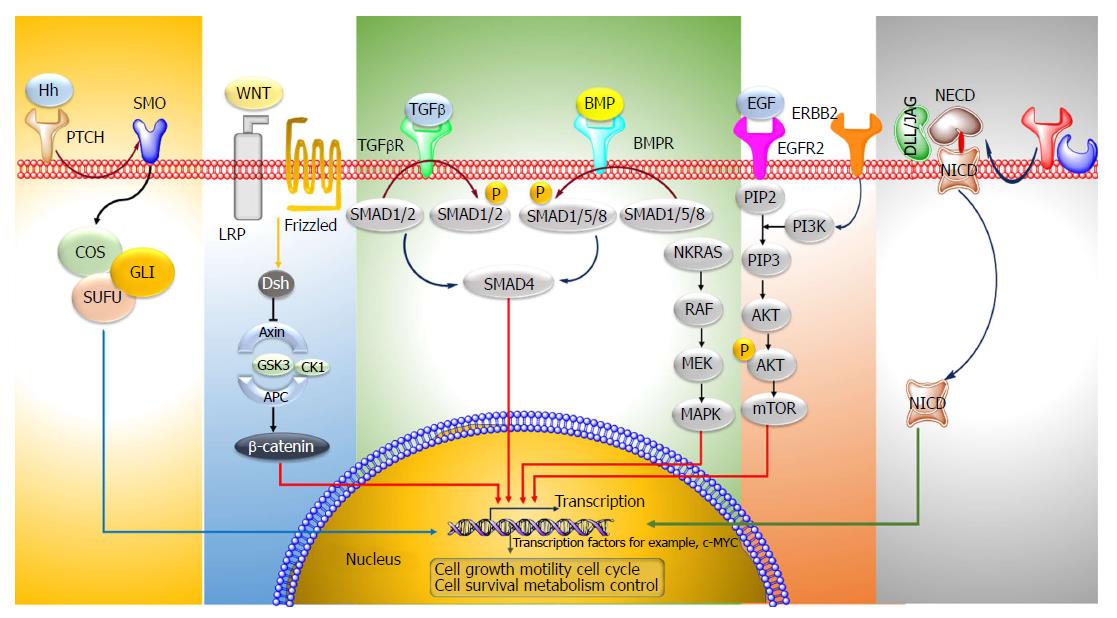Copyright
©The Author(s) 2018.
World J Gastroenterol. Oct 21, 2018; 24(39): 4428-4435
Published online Oct 21, 2018. doi: 10.3748/wjg.v24.i39.4428
Published online Oct 21, 2018. doi: 10.3748/wjg.v24.i39.4428
Figure 1 Various novel approaches for the treatment of colorectal cancer.
Figure 2 Signaling pathways involved in colorectal cancer.
TGF-β: Transforming growth factor-β; LRP: Lipoprotein receptor-related protein; Dsh: Phosphoprotein Dishevelled; GSK3: Glycogen synthase kinase-3; CK1: Casein kinase 1; PI3K: Phosphoinositide 3-kinase; PIP2: Phosphatidylinositol biphosphate; PIP3: Phosphatidylinositol 3,4,5-triphosphate; EGF: Epidermal growth factor; EGFR2: Epidermal growth factor receptor 2; BMPR: Bone morphogenetic proteins receptor; BMP: Bone morphogenetic proteins; RAF: Rapidly Accelerated Fibrosarcoma; MEK: Mitogen-activated protein kinase; AKT: Protein kinase B; MAPK: Mitogen-activated protein kinases; SUFU: Suppressor of fused homolog.
Figure 3 Cytokines involvement in the progression of colorectal cancer.
IL: Interleukin; TNF: Tumour necrosis factor; TGF-β: Transforming growth factor-β; EMT: Epithelial to mesenchymal transition; TAM: Tumour-associated macrophage; ILC: Innate lymphoid cells; GMCSF: Granulocyte–macrophage colony-stimulating factor; MDSCs: Myeloid-derived suppressor cells; CAF: Cancer-associated fibroblast; CIC: Cancer-initiating cell; IEC: Intestinal epithelial cell; DCs: Dendritic cells; TFH: T follicular helper cells; NK: Natural killer cells.
- Citation: Tiwari A, Saraf S, Verma A, Panda PK, Jain SK. Novel targeting approaches and signaling pathways of colorectal cancer: An insight. World J Gastroenterol 2018; 24(39): 4428-4435
- URL: https://www.wjgnet.com/1007-9327/full/v24/i39/4428.htm
- DOI: https://dx.doi.org/10.3748/wjg.v24.i39.4428











